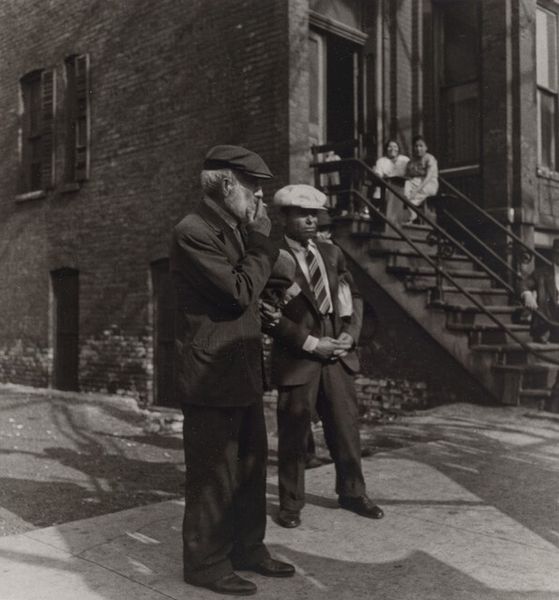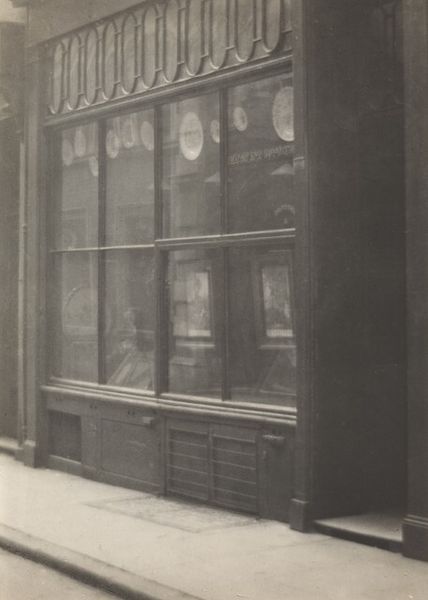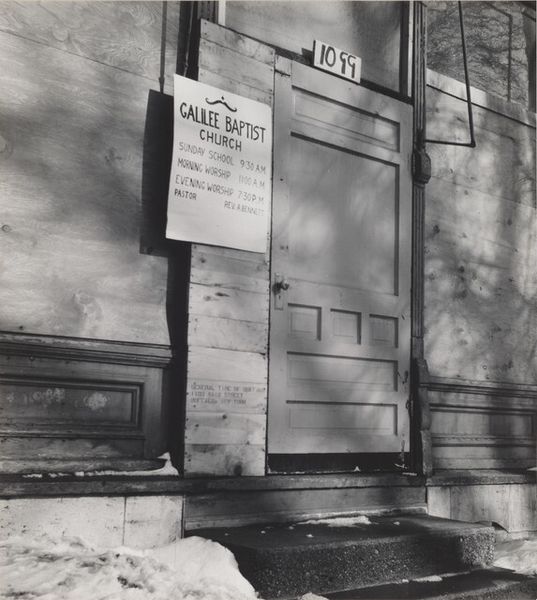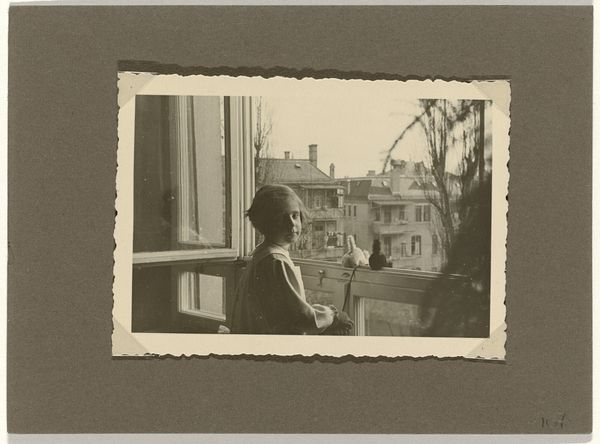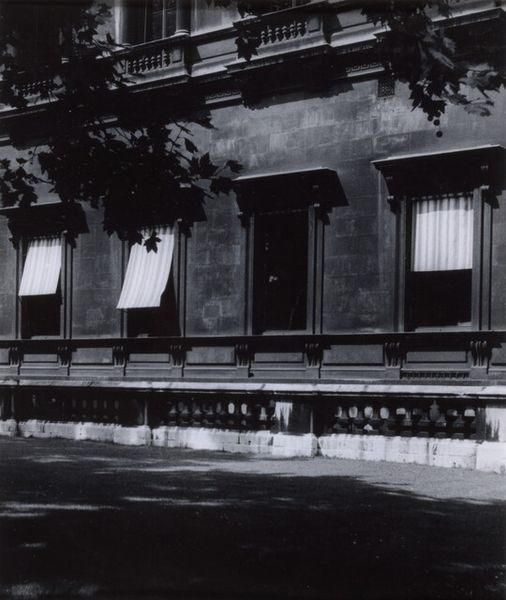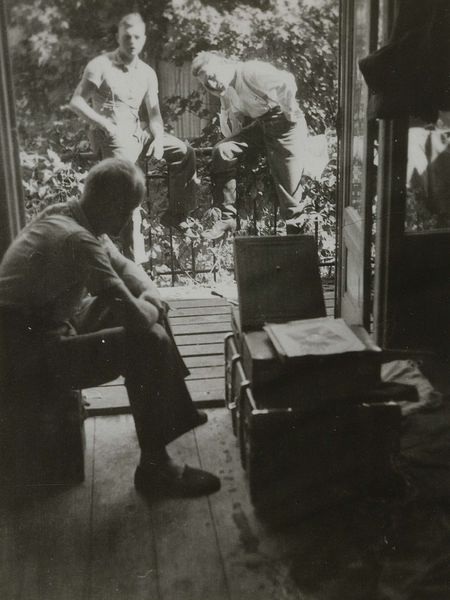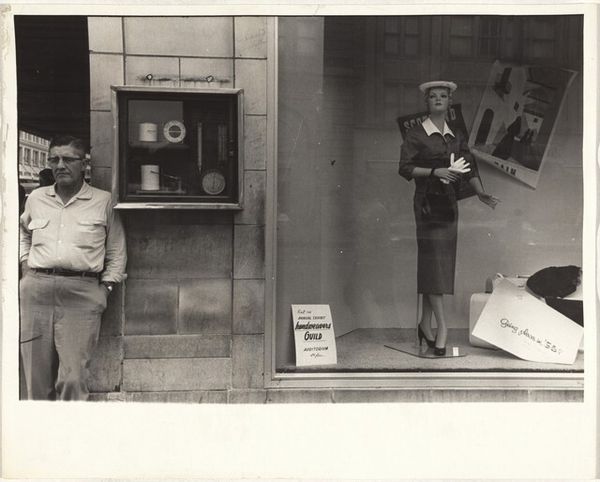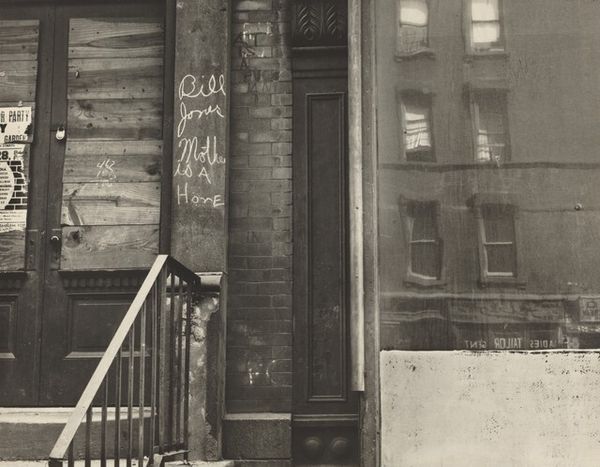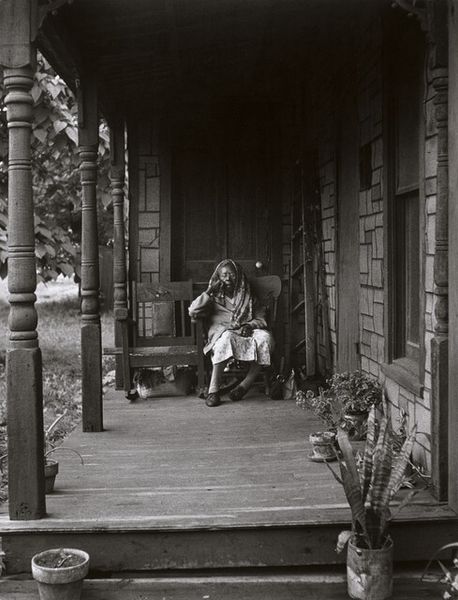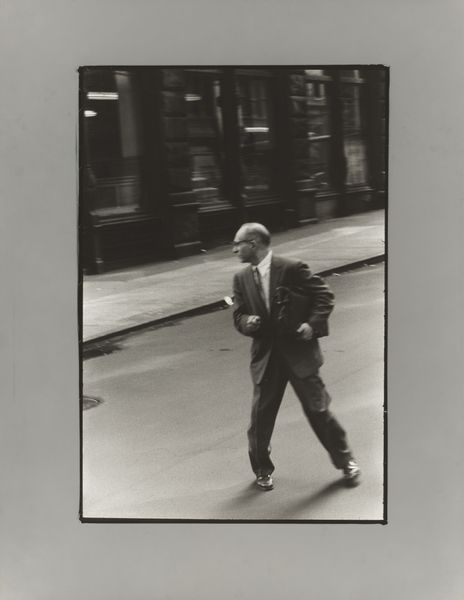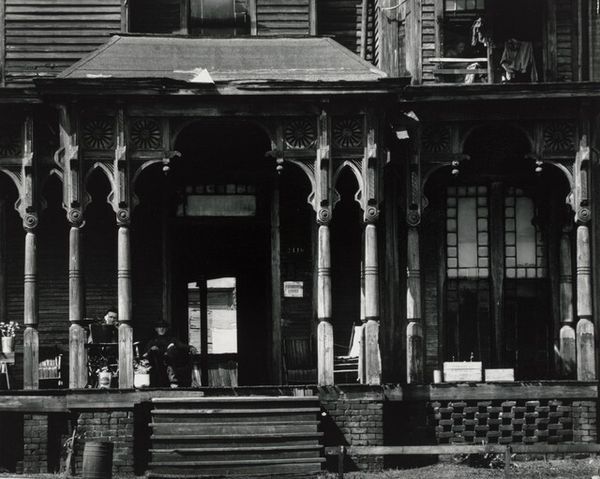
Old time Chinaman of the type that originally followed the crops in California, Sacramento, California 1936
0:00
0:00
photography, gelatin-silver-print
#
portrait
#
black and white photography
#
street-photography
#
photography
#
historical photography
#
gelatin-silver-print
#
ashcan-school
#
realism
Dimensions: image: 26.7 × 34.2 cm (10 1/2 × 13 7/16 in.) sheet: 28.2 × 35.5 cm (11 1/8 × 14 in.)
Copyright: National Gallery of Art: CC0 1.0
Curator: Dorothea Lange captured this poignant moment in her 1936 photograph, a gelatin-silver print entitled "Old time Chinaman of the type that originally followed the crops in California, Sacramento, California". Editor: He looks like he’s waiting...or perhaps he’s finished waiting. The hard lines of the building and the softer lines of his face and clothing…it’s all speaking of time worn. A weariness. Curator: Lange's work often documented the struggles of marginalized communities. This image resonates within the context of the Great Depression and anti-immigrant sentiment, reflecting on the lives of Chinese immigrants in California. We must address that title, too, as both evocative and representative of prevailing attitudes. Editor: The shadow is interesting here – cutting diagonally across the frame, placing the buildings in sunlight and the man in shadow. Metaphor much? It brings an immediacy, an unsentimental gaze. Almost as if Lange wants to highlight the very real, lived spaces these communities carved out. Curator: Lange indeed straddled that line between art and documentary. As part of the Ashcan School influence, her photography sought to capture urban realities. She documented subjects, but the images also reflect a political aim, humanizing those on the margins. The Chinese Benevolent Association behind the figure in the shot provides some sense of community, but it looks desolate, no one else is present in the shot. Editor: Do you think about what happened moments before the photograph, or minutes later? Did someone emerge from that door? It does offer that feeling – like it’s a scene pulled straight from a forgotten play. Curator: It begs such questions. The 'Wah Lung Merchandise' signage, the 'Sacramento Cafe' hints at the ecosystem these communities built for themselves. Yet it simultaneously reveals their restricted circumstances, given the limited opportunities afforded them. Editor: Makes you consider those invisible histories, doesn’t it? Lives etched in the architectural backdrop. Curator: It forces us to confront the past. It's a mirror reflecting not just a single man's story but an entire community's enduring legacy. Editor: Yes, and even with this rather somber feeling, this image stays with you...it makes you remember.
Comments
No comments
Be the first to comment and join the conversation on the ultimate creative platform.
